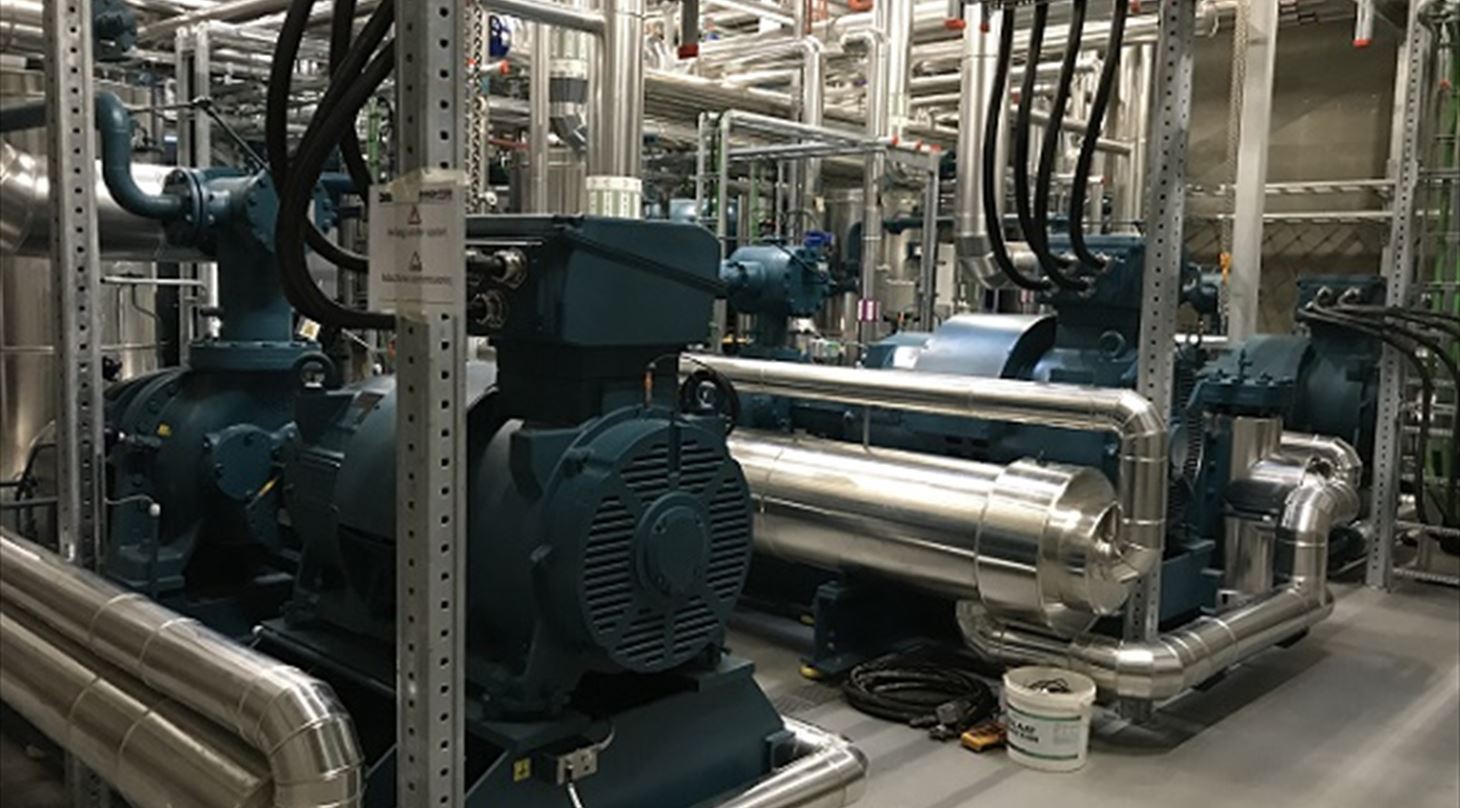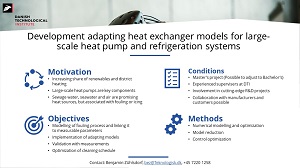
Student projects - Development of adapting heat exchanger models for large-scale heat pump and refrigeration systems
Vælg side
Photo: Plant owned by CTR, HOFOR and VEKS. Funded by EUDP.
Project 5

Download
Please, send your application marked "Project 5" via the application form on our website.
Background and Motivation
Denmark is a frontrunner in the share of renewables and district heating. Large-scale heat pumps are a key-component in this arrangement and imply the potential to facilitate a further uptake of both technologies. Heat pumps can supply heat to the district heating network in a sustainable matter, while implying the possibility to stabilize the electricity grid. In this context, the importance of heat pumps is increasing, and it becomes even more crucial that the systems are operating optimally.
Sewage water and sea water are widely available in the largest Danish cities and therefore often considered as a heat source for heat pumps. Air source heat pumps are instead promising for smaller networks and decentral installations. Sewage and wastewater are, however, associated with fouling and air with icing of the evaporators. The fouling and icing processes impact the performance and require regular cleaning procedures. As a basis for the optimization of the performance and the scheduling of the cleaning processes, HX models are required, which are able to describe the fault processes and continuously adapt itself to the current status of the component.
Objectives
This project aims at the development of heat exchanger models, with a sufficient level of detail, while maintaining numerical robustness and speed.
This comprises the following objectives:
- Description of the fouling or icing processes
- Determination of measurements that are suitable for quantifying the fouling processes
- Implementation of HX models including fault processes that can adapt to the current conditions of the component
- Validation with measurements from existing plants
- Development of optimal cleaning schedules
Methods
The specific methods to be applied during the project will be determined in agreement with the student.
The idea is, however, to use the following methods:
- The numerical model should be implemented in the Modelica language, using Dymola. The commercially available TIL library may be taken as a basis
- The optimization could be conducted in Python
The project will be based on existing and operating plants and may be conducted in collaboration with the manufacturer and the operator.
Supervision and Formalities
The project is designed for a master project, but may be adjusted to a bachelor project. The project can be carried out at or in collaboration with the center for Refrigeration and Heat Pump Technology in the division for Energy and Climate in Aarhus.
Benjamin Zühlsdorf will be supervising the project at Danish Technological Institute. Feel free to contact him if you are interested and want to hear more about the project.
Please, send your application marked "Project 5" via the application form on our website.